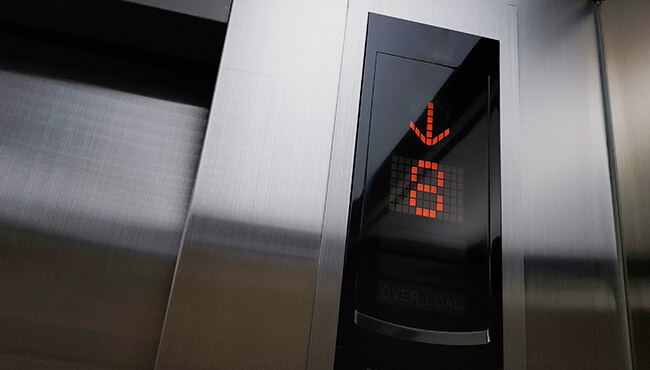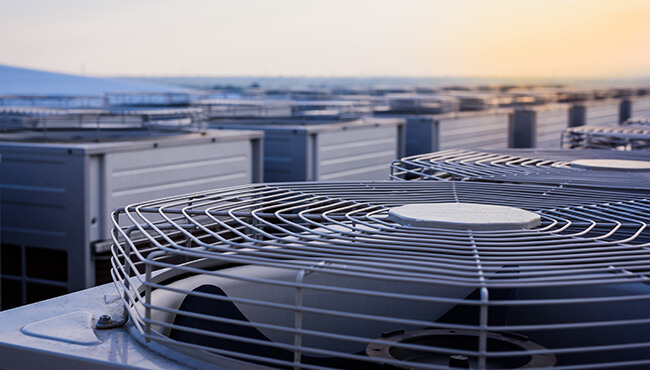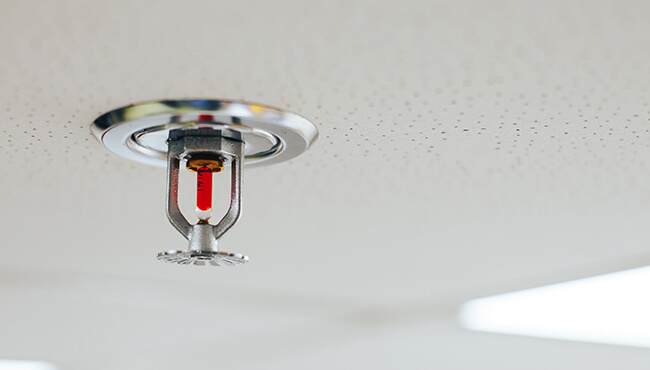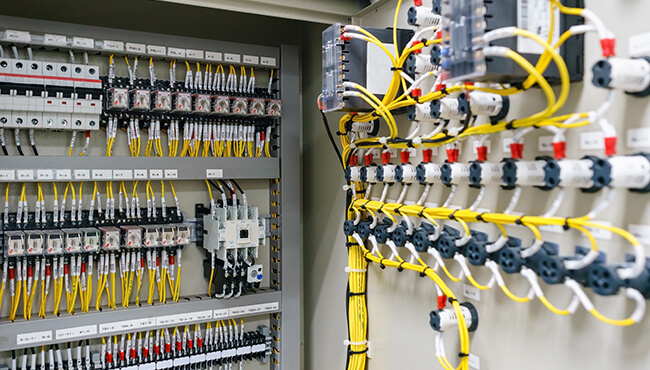
ELEVATOR CONTROL
Nowadays buildings are getting higher and higher. The accurate positioning of the high-speed elevator to each floor has to be achieved by relying on quick computing and control of the controller. Through the communication transmission between the controller of each elevator, the system can always track at which floor the elevator is located and compute out the optimum moving route. Then, assign the most suitable elevator to go to the desired floor, achieving the goal of time and energy saving.- High-speed elevator
- Elevator system

AIR CONDITIONING SYSTEM
In a massive building structure, the central air-conditioning system is usually adopted. Cool or warm air is generated from the central machine and then distributed to different floors and partitions. However, the actual temperature of each partition is not exactly the same as the targeted temperature, i.e., different intensity and amount of cool/warm air must be distributed to a different partition in order to achieve the set targeted temperature. The central air-conditioning system must compute based on the data sent back from the sensor at each partition. Then, based on the result, the system will properly adjust the output power and by regulating the actuation of the blower at each node with the controller, cool /warm air is distributed. In so doing, the temperature requirement at each partition can be accurately met and also energy consumption can be reduced, achieving the energy-saving benefit.- Blower
- Cooling tower
- Building partition
- Building central air-conditioning system

SMOKE FIRE CONTROL SYSTEM
In a high-rise building structure, the escape route is even limited. Therefore, the reliability of the fire system is absolutely a critical factor for building safety. The controller at each node will continuously monitor the figures sent back from the smoke detector and the CO2 detector. Then, the data will be sent back to the central monitoring center. When the detector is triggered, the controller will trigger the sprinkler system and in the meantime, quickly send the alarm message back to the central monitoring center, from where the alarms will be announced to the whole area. The alarm message will also be sent to the local fire department for assistance as it is linked directly with the central monitoring center. Through coordination and collaboration of the decentralization system, it will not only quickly respond to the emergency situation, but also increase the dependability of the system, increasing the safety.- Smoke detection
- Carbon dioxide (CO2) detection
- Sprinkler system
- Alarm system

ENERGY-SAVING CIRCUIT CONTROL
Energy saving is not only a trend. It is also a way of reducing cost, in particular for a large building having a huge circuitry system. Energy saving is particularly a critical way of saving a huge expenditure in the electricity bill. Through infrared sensing, the controller can switch on lighting during people access. Based on people’s work hours, the controller will cut off power at a preset time to the air-conditioning system and the circuitry system, avoiding energy consumption during non-working hours.- Self-sensing lamp
- Fan, Cool/Warm air power cutout
- Timed automatic power cutout